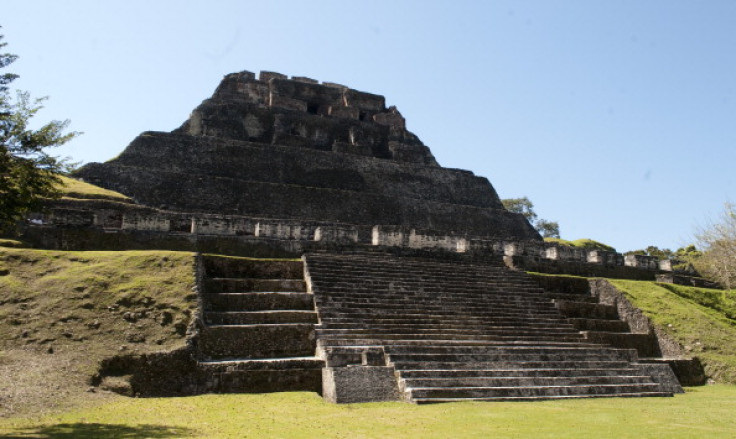Largest Mayan tomb discovered in Belize may hold remains of local ruler
Skeleton of royal in 20s or 30s was found buried with pots, jade beads and animal remains.

The exceptionally well-preserved tomb of a Mayan ruler was discovered in Belize. Found at the heart of the country's famous Xunantunich archaeological site, the burial chamber is the largest and most elaborate so far found in the small the Central American nation.
The Mayan civilisation emerged around 2,600 BC in the Yucatan Peninsula, in the South of Mexico and part of Belize and Guatemala. The civilisation was particularly advanced, with the Mayans excelling at agriculture, pottery and architecture – leaving behind impressive temples and religious structures as well as symbolic artwork.
The Mayans were at the height of their power in the sixth century AD. However, mystery remains about why this great civilisation came to an end. Most of the Mayan stone cities were abandoned by 900 AD and so far archaeologists have been unable to explain the disappearance of such a rich and powerful culture.
In depth archaeological work started decades ago in Belize, but it is only recently that major discoveries have led archaeologists to really look at the country as the centre of Mayan civilisation.
The excavation of the site directed by archaeologist Jaime Awe, from the University of Northern Arizona, studies Xunantunich's palaces and temples to to better understand the late rise of this major Mayan city. The discovery of the royal tomb inside the large mound, at the centre of the site, is part of an ongoing exploration of Belize's Mayan past.
Skeleton with animal remains
The find is all the more remarkable that the site had been excavated since the 1890's, but no one had come across the burial chamber.
The tomb – which measures approximately 4.5 meters north south, and 2.4 meters east – is the first discovered at Xunantunich, and the largest in Belize. The sheer size of the structure suggests that people probably revered the person who was buried inside.
The archaeologists found the skeleton resting at the bottom of the tomb. An analysis of bones and teeth suggests the remains belong to a man in his twenties or thirties when he died. "Future analysis of the skeletal remains will allow us to confirm this age, and to determine probable cause of death and other pathologies. Preliminary analyses of the remains indicate that the individual was male, atheletic in build, and quite muscular", Awe says.
The remains were found buried with 36 ceramic vessels, a possible necklace with 6 jade beads, 13 obsidian blades, and the long bones of jaguar and deer. All these elements, as well as the size of the tomb, indicate that the man had a very important status and was probably the local ruler.
The archaeologists hope that this discovery will pave the way for a better understanding of the Mayan culture, how it was established in Belize and how burial rites were carried out.
Notes: The project represents a collaborative effort between the Department of Anthropology at Northern Arizona University and the Belize Institute of Archaeology, under Pr Awe's direction. Funding support is provided by the Tilden Family Foundation of San Francisco. Also supervising the project are Doug Tilden, and NAU graduate students Kelsey Sullivan, Diane Slocum, and Hannah Zannoto. Fifteen NAU underdgraduates also participated in research at Xunantunich this summmer.
© Copyright IBTimes 2024. All rights reserved.






